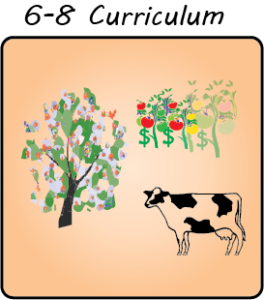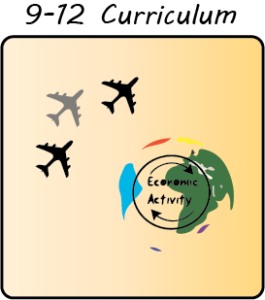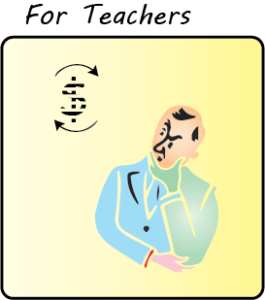An Introduction to Steady State Economics Curriculum
Steady state economics is based on an integrated understanding of Ecology and Economics. Therefore, steady state economics curriculum introduces concepts from both Ecology and Economics. At each level, 3-5, 6-8, and 9-12, we give enough background in both Ecology and Economics to bring about an awareness of the need to balance economic activity with the regenerative function of ecosystems. At higher levels, curriculum goes into greater depth about finding the ‘right’ balance between economic activity and ecological regenerative capacity, and also about ways for linking ecosystems and economic systems through macro-economic policy and microeconomic activity.
As of December, 2018 we have 5 lesson plans for 3-5 and 9-12. These lesson plans are fit for general courses in earth science and social science. Throughout 2019, we will be adapting and enhancing this basic content for particular natural and social science classroom settings and also for greater conjunction with project based learning. We are currently revising this material based on feedback we have gotten from students, teachers and also our K-12 Advisory Board. We are always interested in more feedback and participation, so don’t hesitate to contact us.

Curriculum for ages 7-10
Our 3-5 curriculum focuses on developing a basic understanding of economic activity, the recent increase in economic activity and the pursuit of balance between the human economy and nature’s economy.

Curriculum for ages 10-14
Behind every economic transaction is a transformation of matter and energy, of which the ultimate source is the sun. From this perspective, managing economic activity depends on managing stocks and flows of energy and matter.

Curriculum for ages 14-18
The greatest task for democracy in the 21st century is to figure out the ‘right size’ for the economy. Sustainable scale refers to a size in which respects the rights of future generations. Optimal scale takes into account the benefits we get from nature which we do not account for in market transactions.

